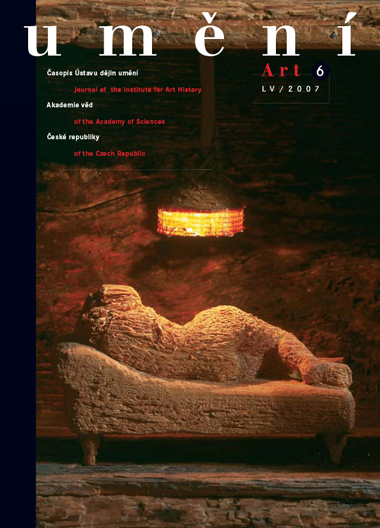Lenka Bydžovská
Toyen a Mnemosyne
Three paintings from Toyen's late period - At a Given Moment (1963), A Secret Room without a Lock (1966) and At Silling Castle (1969) - stand out due to a conspicuous trait they share: pasted into each is a black-and-white reproduction of a Baroque or ancient statue with a mythological motif. This article explores the methods Toyen used to appropriate instances from the art of old; it deals with her selection of mythical female figures and contemplates the significance of depicting sculpture in paintings. Toyen was most radical with the original she selected for the painting At a Given Moment, in which she intervened in the primordial mythological story embodied in Bernini's Apollo and Daphne, appropriating the spectre of the fleeing woman and rotating the cut-out ninety degrees. She was thus alluding to subjects which Salvador Dalí had drawn attention to in The Phenomenon of Ecstasy (1933), a collage in which he included a photograph of a 'hysterical or ecstatic statue'. In the other two paintings, Toyen left the reproduced image in its original form and simply inserted it into a set of relationships intertwined with her own pressing themes, whether that meant her desire to eroticize the world in case of Amor and Psyche, excavated at Ostia (see A Secret Room without a Lock), or the tightly interwoven relationship between woman and dangerous natural forces, as portrayed in the Melian relief of Peleus and Thetis (see At Silling Castle). The question regarding the function of the borrowed motifs in Toyen's imaginary world and why she decided to bring them into the present using black-and-white reproductions of sculptures from bygone centuries recalls Warburg's Pathosformen (pathos formulas). Certain precedents relating to Toyen's approach may be seen in the interpretation that the use of the grisaille technique to shape the antique subjects in Renaissance painting was meant to maintain antiquity at a typological distance. At the same time, however, Warburg was captivated by the Utopian dimension of grisaille. It seems that Toyen had similar aims, although she pursued them intuitively, using modern collage techniques.
Full-text in the Digital Library of the Czech Academy of Sciences:
https://kramerius.lib.cas.cz/uuid/uuid:50905c87-3f17-4c1d-a79f-1f3924e67754
< back

